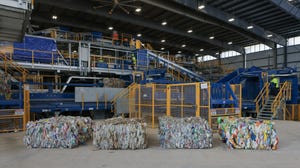WASTE/ENERGY: Florida Tightens Resource Recovery Mercury Emissions
December 1, 1993
Sue Darcey
The state of Florida has approved new mercury emissions regulations for resource recovery plants that would require stack tests for mercury, limit mercury emissions to 70 micrograms per dry standard cubic meter (micrograms/dscm) of flue gas or control the mercury through a waste separation program.
While the regulations are not quite as stringent as a mercury emission standard proposed in New Jersey that would limit mercury emissions to 65 micrograms/dscm, the Flor-ida rule is the first of its kind in the nation and unique in that it permits the substitution of a waste separation program (see chart).
The new regulations, which will be phased in over three years beginning on July 1, 1995, require facilities that are currently equipped with acid gas scrubbers to demonstrate their compliance by July 1995. Those facilities without scrubbers will have to add them by Sept. 1, 1998, in order to meet the mercury emission standard. The federal Environmental Protec-tion Agency is currently drafting regulations that would require resource recovery plants to install acid gas scrubbers to comply with the strict sulfur dioxide and hydrogen chloride emission limits.
The Florida regulations state that resource recovery plants have to demonstrate a mercury emission limit of 140 micrograms/dscm by July 1, 1995; 70 micrograms/dscm by July 1, 1997; and under no circumstances will be allowed to ex-ceed the 70 microgram limit after Sept. 1, 1998.
Florida's rule will go into effect if EPA does not propose federal mercury emission standards by De-cember 1994, according to state officials, but even if the federal agency does meet this deadline and proposes its own mercury standard, the new Florida regulation will likely remain the same.
Despite the fact that only half of the resource recovery plants in the state are equipped with scrubbers that employ the carbon injection technology that controls mercury, Integrated Waste Services Assoc-iation President Kent Burton said he thought the limits could be met. Facilities without pollution control technology can substitute source separation to keep mercury out of the wastestream going to combustors, but must submit a source separation plan to the Florida Department of Environ-mental Protection by March 1, 1994.
Industry leaders polled earlier this year on forthcoming mercury emissions standards from EPA indicated that they would be ready to comply with any new mercury limits, provided that they were based on carbon injection or source separation of mercury batteries or oth-er sources of the heavy metal in trash. For example, Steve Passage, president of Montenay Power Corp., said that his company could cope with the tough mercury emission limits because it had ef-fectively controlled both the mercury and dioxin at a plant in Vancouver, Canada. Richard Oliver of American Ref-Fuel ad-vocated removal of batteries going to incinerators as the best means of controlling mercury e-missions.
Engineers at the Na-tional Renewable Energy Lab (NREL) in Golden, Colo., released a study last summer which concluded that mercury e-missions at waste-to- energy plants could be reduced dramatically if batteries and fluorescent lamps were removed from wastestreams, or if carbon injection (adsorption) technology was used (see Sept. 1993 issue of World Wastes, page 10).
You May Also Like


